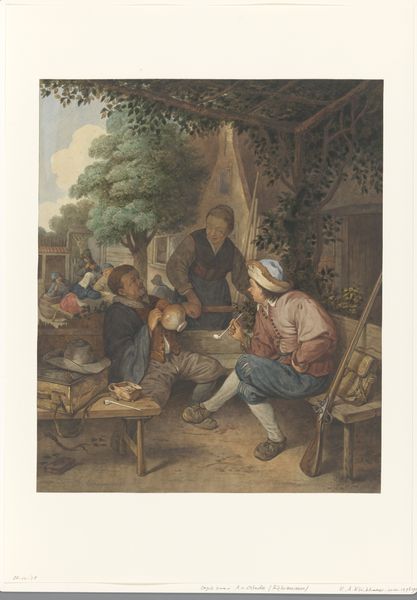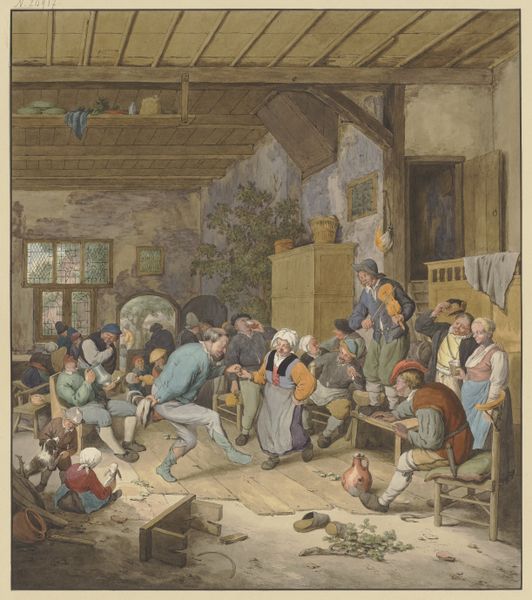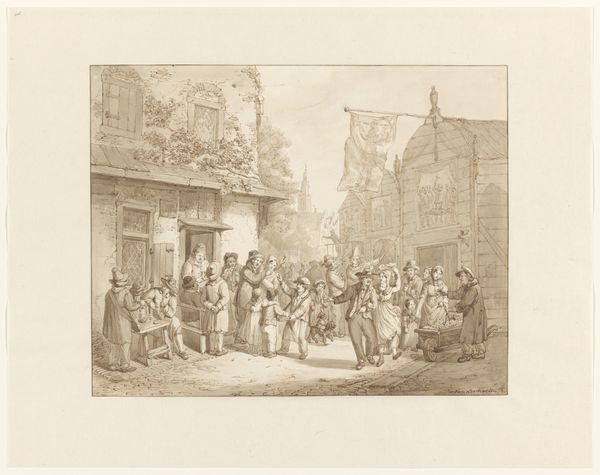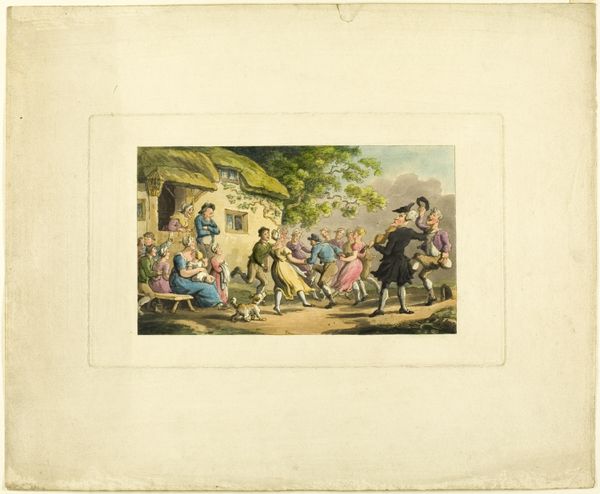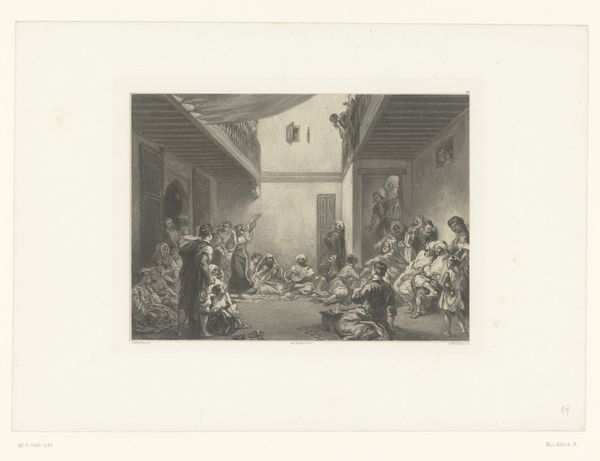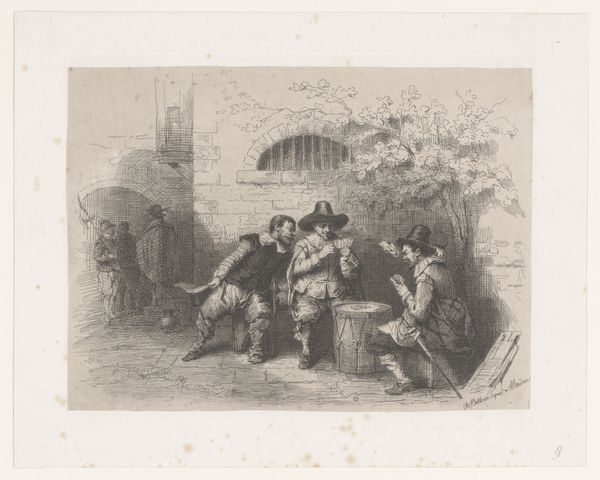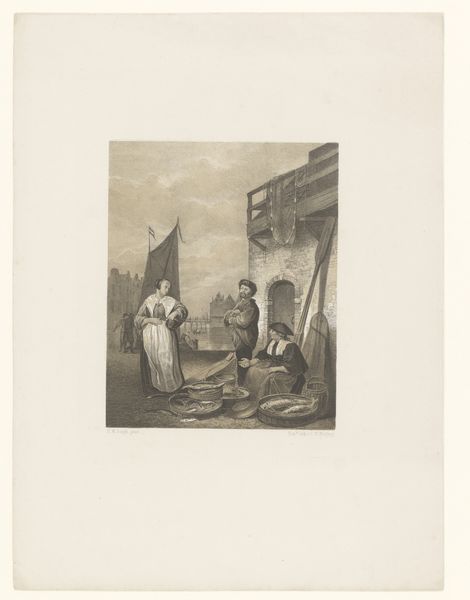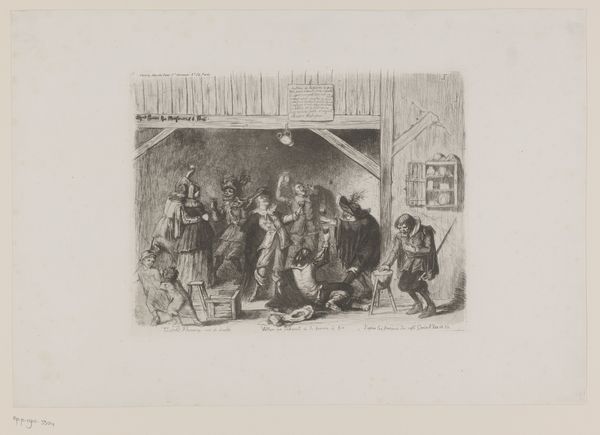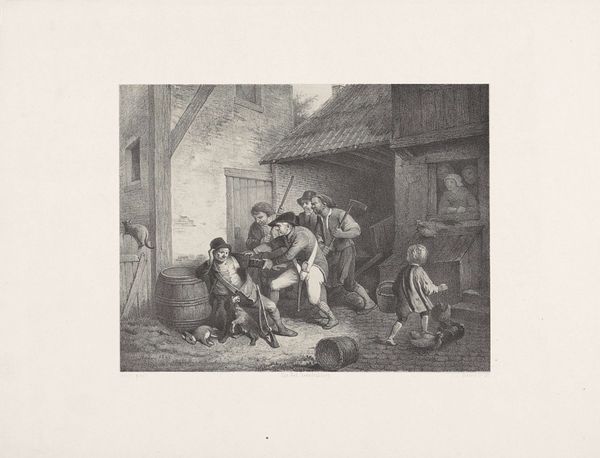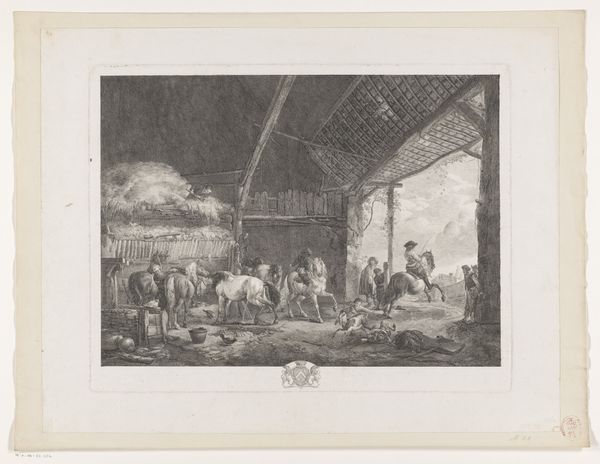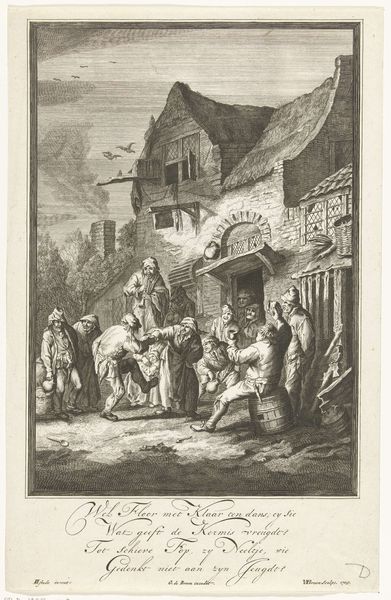
watercolor
#
dutch-golden-age
#
impressionism
#
landscape
#
watercolor
#
watercolour illustration
#
genre-painting
#
watercolor
Dimensions: height 363 mm, width 293 mm
Copyright: Rijks Museum: Open Domain
Editor: Here we have Hendrik Abraham Klinkhamer’s "Boerenherberg", a watercolor from 1867. It shows a scene outside what looks like a Dutch tavern, and the color palette feels very muted. I’m struck by how it seems to portray a specific, yet everyday, moment in time. What stands out to you in this piece? Curator: I'm drawn to how Klinkhamer situates this tavern within a broader social context. Genre paintings like this became popular partly due to the rise of a wealthy merchant class who sought images reflecting their idealized version of Dutch life and values. Notice how everyone is neatly arranged; there’s a deliberate composition at play that’s projecting an orderly vision of Dutch society, despite depicting what should be a more boisterous environment. What do you think this curated image tells us about the relationship between the artist and the art market? Editor: So, you are suggesting this wasn’t just a faithful depiction of reality, but perhaps something intentionally composed to appeal to certain buyers? The way he chooses to arrange these figures does appear intentional now that you point that out. Curator: Precisely. The choice of watercolor, for example, aligns with the desire for smaller, easily collectible works. And it reflects a romanticized notion of rural life. Ask yourself, what socio-economic factors enabled artists like Klinkhamer to thrive, and whom did their art actually represent? Was it truly the common people, or a particular vision for them? Editor: That is a fascinating way to look at it. It gives a lot more depth to a painting that I originally saw as just a simple scene of everyday life. Curator: It invites us to question what narratives were being circulated and supported through art and how art participated in constructing social realities. It reveals much about the cultural values and power structures of the period. Editor: I will definitely look at genre paintings in a new way now, considering their socio-political implications. Thank you!
Comments
No comments
Be the first to comment and join the conversation on the ultimate creative platform.
